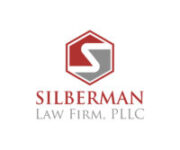
Nuisance is generally the interference with the use and enjoyment of real estate that may result from some wrongful act causing damages. Crosstex N. Texas Pipeline, L.P. v. Gardiner, 505 S.W.3d 580 (Tex. 2016), reh'g denied (Dec. 16, 2016). While Texas recognizes both public nuisance (e.g. littering in a park) and private nuisances (disputes usually between private property owners), this article will focus on the latter. Private nuisances come in three different categories.
Strict Liability
Strict liability nuisance arises from some type of activity on property that results in an abnormal risk or is characteristic of ultra-hazardous behavior. For example, a property owner that runs an alligator sanctuary might be strictly liable if an alligator escapes and causes some type of damage.
Intentional Nuisance
Intentional nuisance may result if someone intentionally creates or maintains a condition that interferes with another's property. Id. For instance, turning on a garden hose to intentionally flood a neighbor's yard would constitute an intentional nuisance.
Negligent Nuisance
In negligent nuisance, a plaintiff must prove that the property owner owed a legal duty, the owner breached that duty, and the breach proximately caused the damages. IHS Cedars Treatment Ctr., Inc. v. Mason,143 S.W.3d 794, 798 (Tex. 2004).
Nuisance claims vary over a vast array of examples and situations. The key thing to remember is that there must be a substantial interference with the plaintiff's use and enjoyment of their property. Crosstex N. Texas Pipeline, L.P. v. Gardiner, 505 S.W.3d 580 (Tex. 2016), reh'g denied (Dec. 16, 2016). The law "does not concern itself with trifles, or seek to remedy all of the petty annoyances and disturbances of everyday life in a civilized community even from conduct committed with knowledge that annoyance and inconvenience will result." PROSSER AND KEETON § 88, at 626. Examples of nuisance claims vary greatly in facts; however, four examples from Texas cases are listed below:
- Smell from pollutants from refineries. See Schneider Nat. Carriers, Inc. v. Bates, 147 S.W.3d 264, 267–68 (Tex. 2004).
- Noise from compression station or other large equipment. See Crosstex N. Texas Pipeline, L.P. v. Gardiner, 505 S.W.3d 580 (Tex. 2016), reh'g denied (Dec. 16, 2016).
- Noise from ATV Park. See Pool v. River Bend Ranch, LLC, 346 S.W.3d 853 (Tex. App. 2011).
- Excessive lighting from flood lights and noise from air conditioners. See GTE Mobilnet of S. Texas Ltd. P'ship v. Pascouet, 61 S.W.3d 599, 606 (Tex. App. 2001).
After establishing a legal claim that results in nuisance, the three potential remedies available to a plaintiff are 1) money damages 2) injunctive relief, and 3) self-help abatement. See Storey, 226 S.W.2d at 617. These three remedies are not always available in every case, and the calculation of money damages might focus on whether a nuisance is temporary or permanent. For example, if a loud air conditioner can be removed, then money damages could be lost rent revenue during the time the loud air conditioner was operating. If a nuisance is permanent such as a noxious smell from a factory, then money damages could be calculated as lost market value. In cases where an injunction is appropriate, a court might just order the offending behavior be stopped.
Nuisance is a complex legal injury, and the courts generally disfavor being burdened with what may be perceived as trivial claims between neighbors. It is important to use a competent real estate attorney to navigate nuisance claims.
All information provided on Silblawfirm.com (hereinafter "website") is provided for informational purposes only, and is not intended to be used for legal advice. Users of this website should not take any actions or refrain from taking any actions based upon content or information on this website. Users of this site should contact a licensed Texas attorney for a full and complete review of their legal issues.
